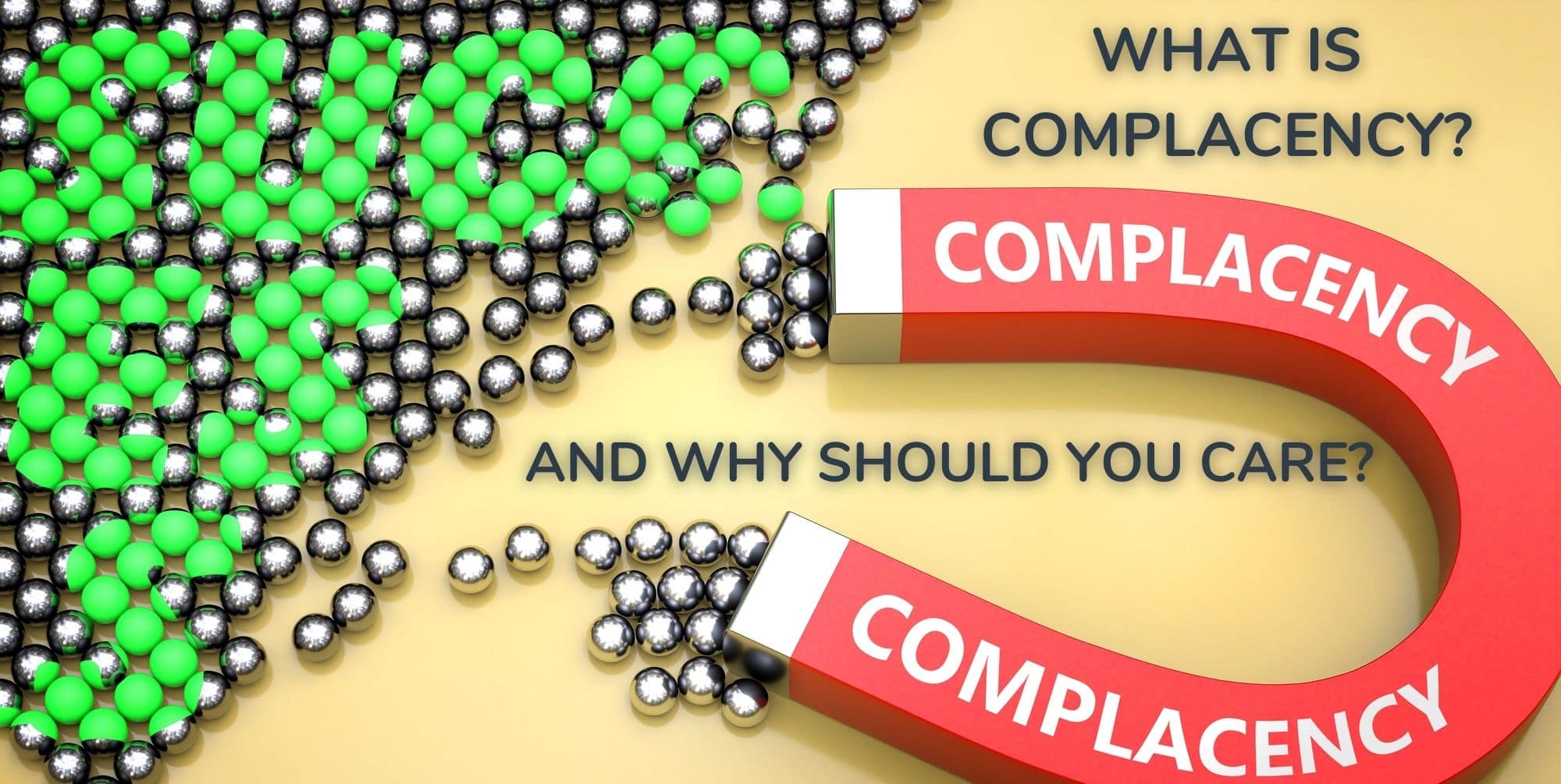
What is complacency? And why should you care?
I’ve been doing a lot of podcasts recently, talking about complacency and vigilance and, in turn, my new book Be Vigilant!
After the podcast is done, I often hear back from the host who’s been surprised at how much they’ve heard the word ‘complacency’ since our chat. On the news. In the office. At dinner parties with friends. The word is used a lot.
And, yet most people don’t fully understand what it means. Let’s try an exercise. Quick. Ready?
What’s the first word that comes to your mind when asked for a synonym of ‘complacent?’
More than likely, you came up with ‘lazy.’
My word would be ‘overconfident.’ See, complacency isn’t really laziness. Because laziness would require a conscious decision to be complacent. A person is lazy when they CHOOSE not to do something that they can do because they have an unwillingness to put in the effort.
The thing about complacency, though, is that we don’t even realize we’ve been complacent until it’s too late. It sneaks up on us. It hides in the background, just waiting for the right conditions to present for it to grow. While we can absolutely make the choices that result in complacency, very few of us consciously decide to be complacent.
The irony is the right condition that best grows complacency is success. More specifically, the overconfidence that comes with success. The more successful we are, the more overconfident and self-satisfied we are, the more vulnerable we become to complacency.
Ok. So, we’ve established that complacency is not laziness. It’s an overconfidence, self-satisfaction, or smugness that’s bred from success and makes us unaware of potential dangers or threats.
Because we’re unaware, we become vulnerable to competition, to changes in markets, to government regulation, to environmental factors, to shifts in consumer or customer dynamics, etc. And, because complacency is born from success, it means we have something meaningful to lose.
The next logical question is what are we supposed to do about it?
The first place people generally go in this discussion is to an assumption that the opposite of complacency is paranoia. This freaks people out. Nobody wants to be paranoid. That doesn’t sound like any fun.
Rest easy. Because the opposite of complacency is not paranoia. It’s vigilance. And here’s the difference:
Paranoia is based in fear. Vigilance is based in awareness.
We don’t fight complacency by walking around in fear of everything that could possibly go wrong. We fight it by being aware. By identifying potential threats and preparing for them. By understanding the actions we can proactively take to prevent complacency from seeping into our teams, our organizations, or even our families.
It turns out there are specific things we can start doing right now that help us identify and fight complacency with vigilance – both at work and at home. These are strategies I learned from my later-in-life entry into the world of law enforcement. And they are the foundation for my book Be Vigilant! Strategies to Stop Complacency, Improve Performance, and Safeguard Success.
The book contains 13 chapters which cover 10 specific strategies you can easily implement today. In the coming weeks, I’m going to be writing a series of posts that give a glimpse into each chapter (including some great stories and case studies). You can learn more about the book at https://BeVigilantBook.com and you can get your copy right now on Amazon. In the meantime, here are the chapters I’ll be covering in coming posts:
In the meantime, here are the chapters I’ll be covering in coming posts:
Chapter 1 – Complacency: A Threat Born From Success and Over-Confidence
Chapter 2 – Survivorship Bias: How Past Success Can Hurt You
Chapter 3 – Threat Awareness: You Can’t Protect Against the Danger You Never See
Chapter 4 – Get Off the X: The Advantages of Strategic Unpredictability
Chapter 5 – Briefing and Debriefing: Question Everything, Even When Everything Goes Right
Chapter 6 – Keep Both Eyes Open: Avoid the Tunnel By Seeing Beyond the Target
Chapter 7 – Reminders: Tap the Senses to Remember What You’d Rather Forget
Chapter 8 – Autonomy: Fighting Complacency Through the Power of Empowerment
Chapter 9 – Good Habits: Think Less for Increased Success
Chapter 10 – Accountability + Transparency = Vigilance: The ATV Model
Chapter 11 – Articulating the Why: Avoiding the Hidden Danger of “Because I Said So”
Chapter 12 – Metrics Gone Wrong: No Blood Doesn’t Mean No Bleeding
Chapter 13 – Be Vigilant! Always
If you have any questions or thoughts, please let me know. If you want any help understanding where your team or organization is vulnerable to complacency, I’d love to work with you. And, of course, please keep me in mind if you find yourself in need of a speaker for an upcoming event (live or virtual).
Until next time, be vigilant!
Len

0 Comments